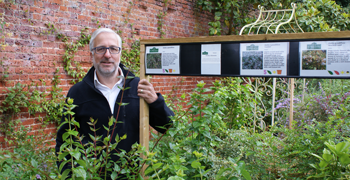In his first blog for ICL, guest blogger and well known industry consultant Neville Stein reflects on the past, and considers the immediate prospects for the garden retail sector ………

Whenever we approach a new decade, I try to reflect on the past ten years and consider what the forthcoming decade might have to offer. As the years roll by my experience and understanding of the garden retail scene increases, as one would hope and expect considering 2020 marks my 43rd year in the industry! Since starting work on a retail nursery in 1977 I have witnessed 4 economic recessions, some more brutal and longer than others but probably the most serious being the global financial crisis in 2008. This seems such a long time ago, and let’s hope we won’t see anything as serious in the next decade. The chances are however that there will be another recession simply because this is what happens in free market economies - they go through cycles! Rather than be the harbinger of doom however, I believe that in the garden retail industry we have little to fear. Why? Well, because based on my experience, the garden retail industry not only fairs well in a recession but outperforms traditional high street retailing. Consider the following figures- in 2010 the garden retail market was valued at £4.3 billion but in 2018, the HTA suggested that UK households spent a staggering £7.2 billion on garden goods, this at a time when high street retailing was suffering from high rents and rates and declining footfall. Whilst the industry may not of course be bullet proof I would suggest that it is then recession resilient – certainly this is the view of many industry commentators but it is also a view that is supported by statistics. In 2018 the UK economy grew by only 1.4%, the weakest economic growth since 2012. Yet, set against a struggling economy garden centres in 2018 experienced a growth in sales of 3%. Whilst not double digit growth, at least it is growth at a time when the economy was stalling.
Why then do garden centres consistently outperform high street sales? One major factor is that the average customer spend in a garden centre is pretty low, typically ranging from £15 to £35, with the average household spending £150 per year on the garden. This in the grander scheme of personal finances is a low sum, and garden centres excel in offering affordable and quick pleasure hits. Another factor is the psychological and emotional comfort they offer – something enjoyed by over two thirds of adults who visit a garden centre at least once a year. During times of recession consumers tend to ‘retreat to the home’ seeing their own dominion as a safe haven from the trials of the world. This means of course that they often seek solace in their garden, enjoying the many benefits that gardening can bring, and also engaging in a very cost effective hobby. The increasing number of homes being built is also good news for garden retail. In 2015 the Conservatives announced a plan to build 1 million new homes by the end of 2020. Whilst this has not occurred the sentiment remains – we need more houses in the UK.
Perhaps the greatest reason why garden centres outperform many traditional retail sectors is the fact that many enterprises are privately owned, enabling the owners to rapidly respond to market conditions and changing consumer behaviour. Contrast today’s modern garden centre with those that I first visited in the 1960s, and one will note that they are worlds apart. To maintain a healthy growth in sales garden retailers will of course need to continue this dynamic approach, to develop their range, and embrace (or start!) new trends such as the growth in houseplant sales, which remarkably have seen a renaissance in recent years. No surprise considering 68% of British gardeners consider the health and well-being benefits of plants before they make a purchasing decision. Other trends to watch out for include a growth in grow your own – 90,000 brits are on the waiting lists for allotments and easy gardening. Recent years have also seen a rapid rise in planted containers with Wyevale’s last trend report suggesting that year on year sales of instant planters was up 14% - a trend that look set to continue as consumers look for an instant colour burst in their garden.
All these trends and other positive factors of course come with challenges. To capitalise on opportunities we have to grow what the public wants, to the right specification and at the right price. If we all work together – customer, retail, grower and distributor, I believe we can maximise plant sales and take garden retail from strength to strength in the decade ahead.
